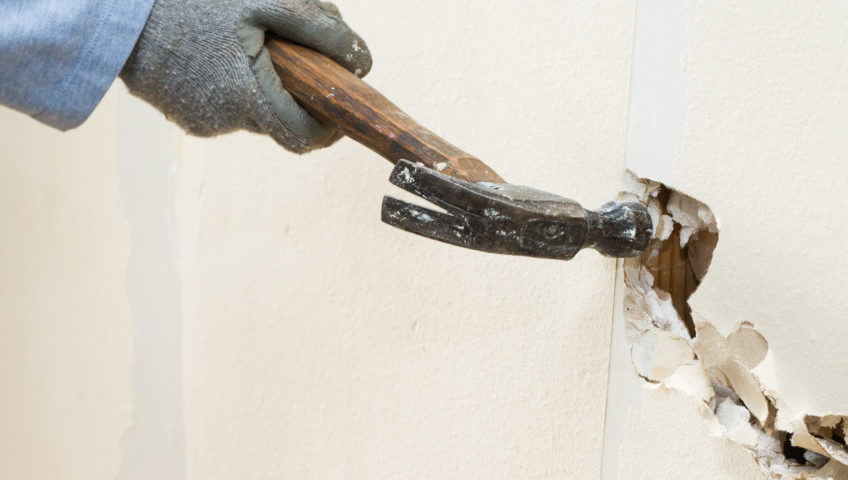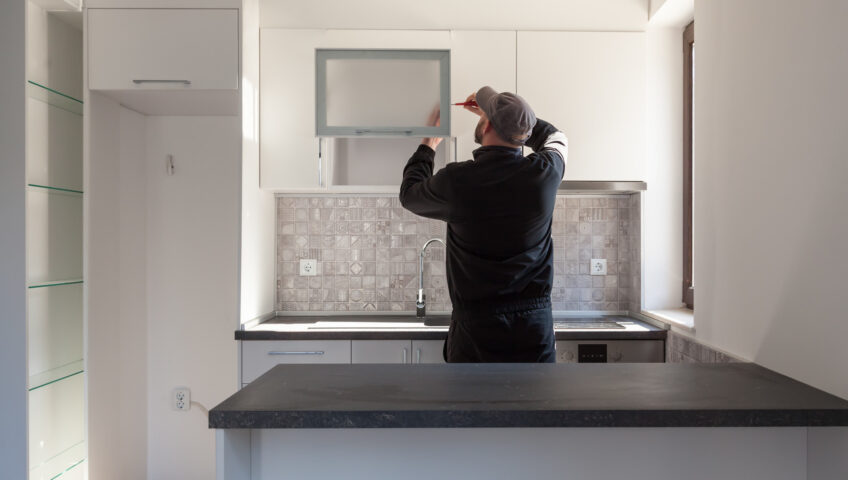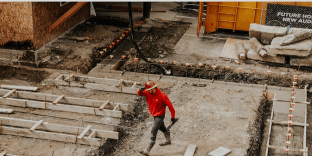
A Complete Guide on How to Remove a Wall
Did you know that your home should get a remodeling every 15 to 20 years?
Removing a wall in your home can be a daunting task. It is important to know when it is the right time to remove a wall and when it is better to move it. In this guide, we will walk you through the process of removing a load-bearing wall and how to do it safely.
We will also discuss when it is necessary to remove a structural wall and how to do that safely.
Ready to learn how to remove a wall? Keep reading!
What You Need to Know Before Removing a Wall
You must keep a few things in mind before removing any wall in your home. The first is to determine whether the wall you want to remove is load-bearing or not. A load-bearing wall supports the structure’s weight above it and transfers that weight to the foundation.
How the framing is constructed usually tells if a wall is a load-bearing wall. For example, if the wall is framed with two or more studs, it is likely load-bearing. Another way to tell if a wall is load-bearing is by looking at the floor joists.
The joists will run parallel to the wall; if they sit on top of it, it is likely load-bearing. If you are unsure whether or not the wall is load-bearing, it is always best to consult with a professional before proceeding.
The next thing you need to do before removing a wall is to determine what type of wall you are dealing with. There are two types of walls in a home: structural and non-structural. Structural walls support the weight of the house and can be load-bearing or non-load-bearing.
Non-structural walls do not support the weight of the house and are usually only cosmetic.
Now that you know what type of wall you are dealing with, you can start planning how to remove it.
Safety Precautions to Take When Removing a Wall
Before you start tearing down any walls in your home, there are some safety precautions you need to take.
The first is to make sure the wall is not load-bearing. If you are unsure, it is always better to avoid caution and consult a professional before proceeding.
The following safety precaution is to wear the proper safety gear. This includes eye protection, gloves, and a dust mask.
The last safety precaution is having someone else in the room while you are working. Then, they can help you if something goes wrong or call for help.
How to Remove a Wall: The Steps Involved
Removing a wall is a big project and should not be taken lightly. If you are unsure how to remove a wall, it is always best to hire a professional.
However, if you are confident in your ability to remove the wall yourself, follow these steps:
Step 1: Gather Your Equipment
Before tearing down the wall, you need to ensure you have the right equipment. You will need
- Sledgehammer
- Crowbar
- Pry bar
You may also need a chisel and hammer if the wall has plaster or drywall.
Sometimes you might need some additional pieces of equipment, such as a jack, support posts, and other items if it is a load-bearing wall. However, if it is a non-structural wall, you can make do with the equipment mentioned previously.
Step 2: Determine What Kind of Wall You Have
As we mentioned, a home has two types of walls: structural and non-structural. If you are dealing with a structural wall, you need to replace the wall with a structural beam.
Engineered beams or laminated veneer lumber (LVL) are some of the best beams for reinforcing structures. You can find these beams at your local home improvement store.
If you are dealing with a non-structural wall, you do not need to replace the wall with a beam.
Step 3: Remove the Drywall or Plaster
Once you have determined what kind of wall you are dealing with, you can start removing the drywall or plaster. Use a crowbar to remove the top and bottom plates if the wall has drywall.
Then, use a sledgehammer to break through the drywall. Be careful not to damage any of the electrical wiring or plumbing that may be behind the wall.
Use a chisel and hammer to remove the lath strips if the wall has plaster. Once you remove the lath, use a sledgehammer to break through the plaster.
Step 4: Remove Utility Lines
If any utility lines run through the wall, you must remove them before continuing. First, turn off the power to the area and then use a utility knife to cut through the insulation around the wires.
Next, use a pair of needle-nose pliers to twist and pull the wires out of the wall. If pipes run through the wall, you must cut them and cap them off before continuing.
Step 5: Remove the Studs
After you have removed the drywall or plaster, you need to remove the studs. Use a pry bar or crowbar to remove the nails holding the studs.
Then, use a sledgehammer to remove the studs themselves. Be careful not to damage any of the electrical wiring or plumbing that may be behind the wall.
Step 6: Clean Up the Area
Once you have removed the wall, you need to clean up the area. Remove any debris that may be left behind and dispose of it properly.
You may also need to patch any holes or cracks left behind. Once the area is clean and repaired, you can start painting or hanging drywall.
Removing a wall is a big project, but it is not impossible. You can remove a wall with some planning and the right equipment. Just be sure to take all the necessary precautions and always hire a professional if unsure how to proceed.
What to Do After the Wall Is Removed: Load Bearing Wall Ideas
Once the wall is removed, you must decide what to do with the extra space. Some people choose to build a closet or turn the area into a home office.
Other people use the extra space to open up their living room or kitchen. But, no matter what you decide to do with the extra space, removing a wall can be a great way to add value to your home.
Wall Removal Contractor
If you decide to hire a professional to remove the wall for you, be sure to get multiple estimates. Wall removal is a big job, and you want to ensure you get the best possible price.
You should also make sure that the contractor is licensed and insured. This will protect you in case anything goes wrong during the project.
Removing a wall is a big project, but it is not impossible. You can remove a wall with some planning and the right equipment. Just be sure to take all the necessary precautions and always hire a professional if unsure how to proceed.
FAQS About Removing Walls
There are some FAQs that many DIYers tend to ask. Let’s look at some of them.
Can I Remove a Wall Myself?
Yes, you can remove a wall yourself with some planning and the right equipment. Just be sure to take all the necessary precautions and always hire a professional if unsure how to proceed.
How Much Does It Cost to Hire a Professional?
The cost of hiring a professional will vary depending on the size and scope of the project. Be sure to get multiple estimates before hiring a contractor.
Can I Remove a Load-Bearing Wall?
Yes, you can remove a load-bearing wall with the help of a professional. However, always take all necessary precautions and follow all local building codes.
Average Costs of Removing a Wall
The average cost of removing a wall is $300 to $400. However, the cost will vary depending on the size and scope of the project.
As you can see, many factors go into removing a wall. So be sure to do your research and plan before starting any demolition projects. And always remember to hire a professional if you are unsure about how to proceed.
Ready to Remove a Wall: Get Started Today
Now that you know how to remove a wall, what will you do with the extra space?
Use these tips and tricks to help you safely and efficiently remove a wall in your home. Always remember that we are here if you are unsure of how to proceed. Schedule a free consultation today!


